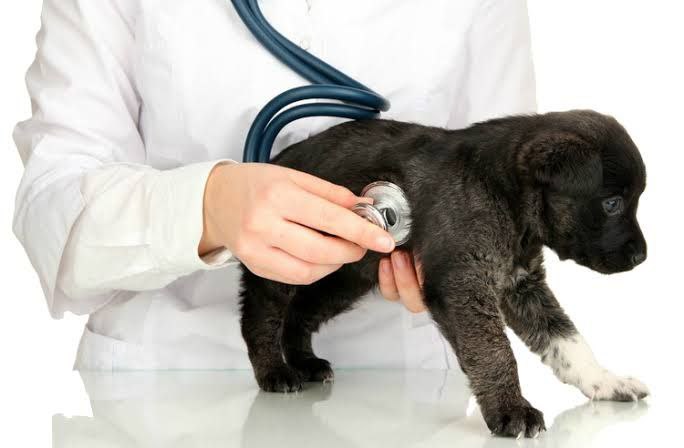What to Feed a Sick Dog with No Appetite
Assessing the Situation
When your dog is sick and refusing to eat, it’s crucial to identify the underlying cause and address any immediate concerns. Here are some steps to take before determining the appropriate food for a sick dog with no appetite:What to Feed a Sick Dog with No Appetite
- Consult Your Veterinarian
- Schedule a visit to the veterinarian to determine the cause of your dog’s loss of appetite. The vet will perform a thorough examination, conduct necessary tests, and provide specific guidance tailored to your dog’s condition.What to Feed a Sick Dog with No Appetite
- Follow Veterinary Recommendations
- If your veterinarian prescribes medications or treatments, follow their instructions carefully. Addressing the underlying cause of your dog’s illness may help restore their appetite naturally.What to Feed a Sick Dog with No Appetite
Providing Proper Nutrition

When a sick dog has no appetite, it’s important to provide them with easily digestible and enticing food options. Here are some considerations and recommendations for feeding a sick dog:
- Choose Highly Digestible Foods
- Opt for easily digestible foods that are gentle on your dog’s stomach. These foods are typically low in fat and fiber and can help prevent further gastrointestinal upset.
- Offer Warm and Aromatic Foods
- Warming the food slightly or adding a bit of low-sodium chicken or bone broth can enhance its aroma and make it more appealing to your dog. The enticing smell may help stimulate their appetite.What to Feed a Sick Dog with No Appetite
- Try Home-Cooked Meals
- Preparing homemade meals for your sick dog can provide a fresh and appetizing alternative. Cooked lean meats (chicken, turkey) and easily digestible carbohydrates (rice, sweet potatoes) can be combined to create a nutritious and palatable meal.What to Feed a Sick Dog with No Appetite
- Consider Commercial Prescription Diets
- In some cases, your veterinarian may recommend prescription diets formulated for dogs with specific health conditions. These diets are designed to provide optimal nutrition and support recovery.What to Feed a Sick Dog with No Appetite
- Encourage Small, Frequent Meals
- Offer smaller portions of food throughout the day rather than large meals. This approach can be less overwhelming for your dog and may increase the likelihood of them eating.What to Feed a Sick Dog with No Appetite
Food Options for a Sick Dog

When selecting food for a sick dog with no appetite, consider the following options:
- Boiled Chicken and Rice
- Boil boneless, skinless chicken breasts and shred the meat. Mix it with cooked rice for a bland and easily digestible meal.
- Low-Fat Cottage Cheese
- Cottage cheese is low in fat and high in protein. It can be a good option for dogs with digestive issues.
- Pumpkin Puree
- Plain pumpkin puree (not pumpkin pie filling) can help soothe the stomach and promote healthy digestion.
- Baby Food
- Some plain baby foods, such as pureed chicken or turkey, can be gentle on a sick dog’s stomach and may entice them to eat.
- Commercial Prescription Diets
- Consult with your veterinarian about prescription diets that are specifically formulated for dogs with health conditions. These diets are carefully balanced to provide optimal nutrition.What to Feed a Sick Dog with No Appetite
What to do when your dog not eating food or drinking water l Tips on LOSS OF APPETITE l
Feeding Techniques and Tips
When feeding a sick dog with no appetite, consider the following techniques and tips:
- Hand-Feeding
- Offer small portions of food directly from your hand. The personal interaction and closeness may encourage your dog to eat.
- Warm the Food
- Slightly warm the food before serving to enhance its aroma and make it more enticing.
- Assist with Feeding
- If necessary, use a syringe or feeding spoon to assist in delivering small amounts of food into your dog
Feeding Techniques and Tips (Continued)
- Avoid Force-Feeding
- Force-feeding should be avoided unless specifically recommended by your veterinarian. It can cause stress and aversion to food, worsening the situation.
- Make Feeding Time Pleasant
- Create a calm and quiet environment during feeding time. Minimize distractions and provide a comfortable space for your dog to eat.
- Monitor Water Intake
- Ensure your dog stays hydrated by monitoring their water intake. Offer fresh water regularly, and if necessary, consult your veterinarian for additional hydration methods.
- Keep a Feeding Diary
- Maintain a feeding diary to track your dog’s appetite, food intake, and any observed reactions or changes. This information can be helpful for your veterinarian in assessing your dog’s progress.
When to Seek Veterinary Assistance
While these recommendations can be helpful for encouraging a sick dog to eat, it’s essential to monitor your dog’s condition closely. Contact your veterinarian if any of the following situations arise:What to Feed a Sick Dog with No Appetite
- Persistent Refusal to Eat
- If your dog consistently refuses to eat for more than 24 hours, consult your veterinarian for further evaluation and guidance.
- Severe Weight Loss or Dehydration
- Rapid weight loss or signs of dehydration (e.g., dry gums, sunken eyes, lethargy) require immediate veterinary attention.
- Vomiting or Diarrhea
- If your dog experiences persistent vomiting or diarrhea, it could indicate an underlying condition that requires veterinary intervention.
- Changes in Behavior or Symptoms
- Monitor for any significant changes in your dog’s behavior, energy levels, or other symptoms. Report these changes to your veterinarian.
Remember, every dog is unique, and their nutritional needs may vary based on their health condition. It’s crucial to consult with your veterinarian to determine the best approach for your sick dog with no appetite. They can provide personalized guidance and recommendations based on your dog’s specific situation, ultimately ensuring their health and well-being.What to Feed a Sick Dog with No Appetite
| Food Options for a Sick Dog with No Appetite | Feeding Techniques and Tips |
|---|---|
| Boiled Chicken and Rice | – Hand-feed small portions from your hand. |
| Low-Fat Cottage Cheese | – Warm the food slightly to enhance its aroma. |
| Pumpkin Puree | – Avoid force-feeding; let the dog eat at its own pace. |
| Baby Food | – Create a calm and quiet environment during feeding. |
| Commercial Prescription Diets | – Monitor water intake to ensure proper hydration. |
| – Keep a feeding diary to track appetite and food intake. | |
| What to Feed a Sick Dog with No Appetite | |
| When to Seek Veterinary Assistance | |
| Persistent refusal to eat | |
| Severe weight loss or dehydration | |
| Vomiting or diarrhea | |
| Changes in behavior or symptoms |
Please note that this is a simplified representation of the information. It’s important to consult with your veterinarian for specific guidance tailored to your dog’s condition.
| FAQ | Answer |
|---|---|
| What should I do if my sick dog refuses to eat? | Consult with your veterinarian to determine the underlying cause and receive guidance on appropriate feeding strategies for your dog. |
| How long can a dog go without eating? | Dogs can typically go without food for a few days, but it’s essential to address the loss of appetite promptly. Contact your veterinarian for guidance. |
| Should I force-feed my dog if it has no appetite? | Force-feeding is generally not recommended unless specifically advised by your veterinarian. Work with your vet to find alternative feeding methods. |
| Are there any home remedies to stimulate my dog’s appetite? | Some options include warming the food, offering enticing aromas, or using appetite stimulants recommended by your veterinarian. |
| Can I offer human food to my sick dog? | Certain human foods, like boiled chicken and rice, can be safe for dogs. However, consult your veterinarian for suitable options and portion sizes. |
| What if my dog has a specific dietary requirement? | Discuss your dog’s dietary needs with your veterinarian, who can recommend appropriate commercial diets or guide you in preparing homemade meals. |
| How can I track my dog’s food intake and progress? | Keep a feeding diary to record food intake, appetite changes, and any observations. This information can assist your veterinarian in assessing the situation. |
| When should I seek veterinary assistance? | Contact your veterinarian if your dog’s loss of appetite persists, or if there are other concerning symptoms such as weight loss or dehydration.What to Feed a Sick Dog with No Appetite |
Read More:
